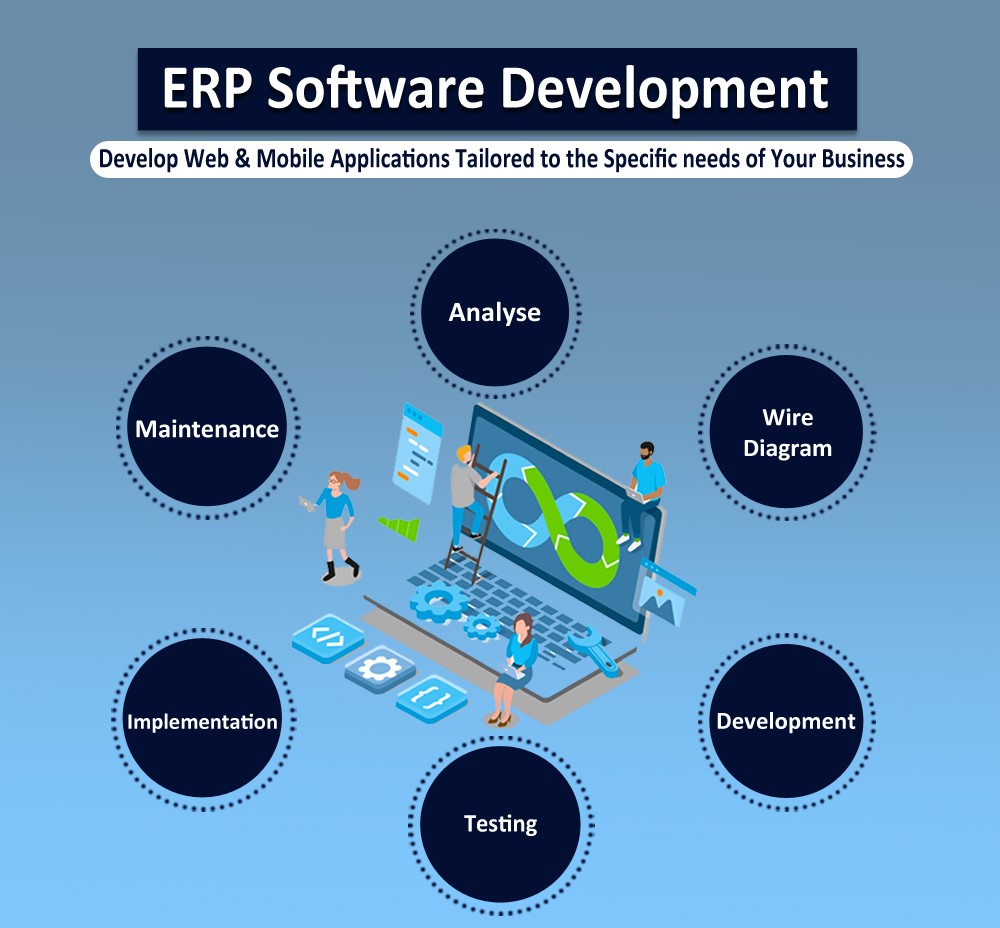Enterprise Resource Planning
Enterprise Resource Planning (ERP) software development involves creating comprehensive software solutions that integrate and automate core business processes such as finance, human resources, inventory management, supply chain management, customer relationship management (CRM), and more. Here's an overview of the key aspects of ERP software development:
Requirement Analysis: The first step is to understand the specific requirements and challenges of the client's business. This involves gathering information about existing processes, workflows, and pain points that the ERP solution aims to address.
System Design: Based on the gathered requirements, a detailed system design is created. This includes defining the architecture, modules, databases, and user interface of the ERP software. It also involves selecting the appropriate technology stack and development tools.
Development: Developers use programming languages and frameworks to build the various modules and components of the ERP software. The development process typically involves backend development for data processing and storage, frontend development for user interfaces, and integration with third-party systems and APIs.
Customization and Configuration: ERP software often requires customization to align with the specific needs and processes of the client's business. This may involve configuring workflows, setting up user roles and permissions, and customizing reports and dashboards.
Testing: Thorough testing is conducted to ensure the ERP software is reliable, secure, and performs as expected. This includes functional testing, integration testing, performance testing, and security testing to identify and fix any bugs or issues.
Deployment: Once the ERP software is tested and approved, it is deployed to the client's infrastructure. This may involve installation on-premises servers or deployment to cloud-based platforms, depending on the client's preferences and requirements.
Training and Support: Users and administrators are trained on how to use the ERP software effectively. Additionally, ongoing support is provided to address any questions, issues, or enhancement requests that arise after deployment.
Maintenance and Updates: ERP software requires regular maintenance to ensure it remains up-to-date, secure, and compatible with evolving business needs and technologies. Updates and patches are released periodically to introduce new features, fix bugs, and address security vulnerabilities.
Throughout the ERP software development process, collaboration between developers, business analysts, project managers, and stakeholders is essential to ensure the solution meets the client's objectives and provides tangible benefits to the organization. Additionally, adherence to industry standards and best practices, as well as compliance with relevant regulations, is crucial for the success of ERP implementations.


